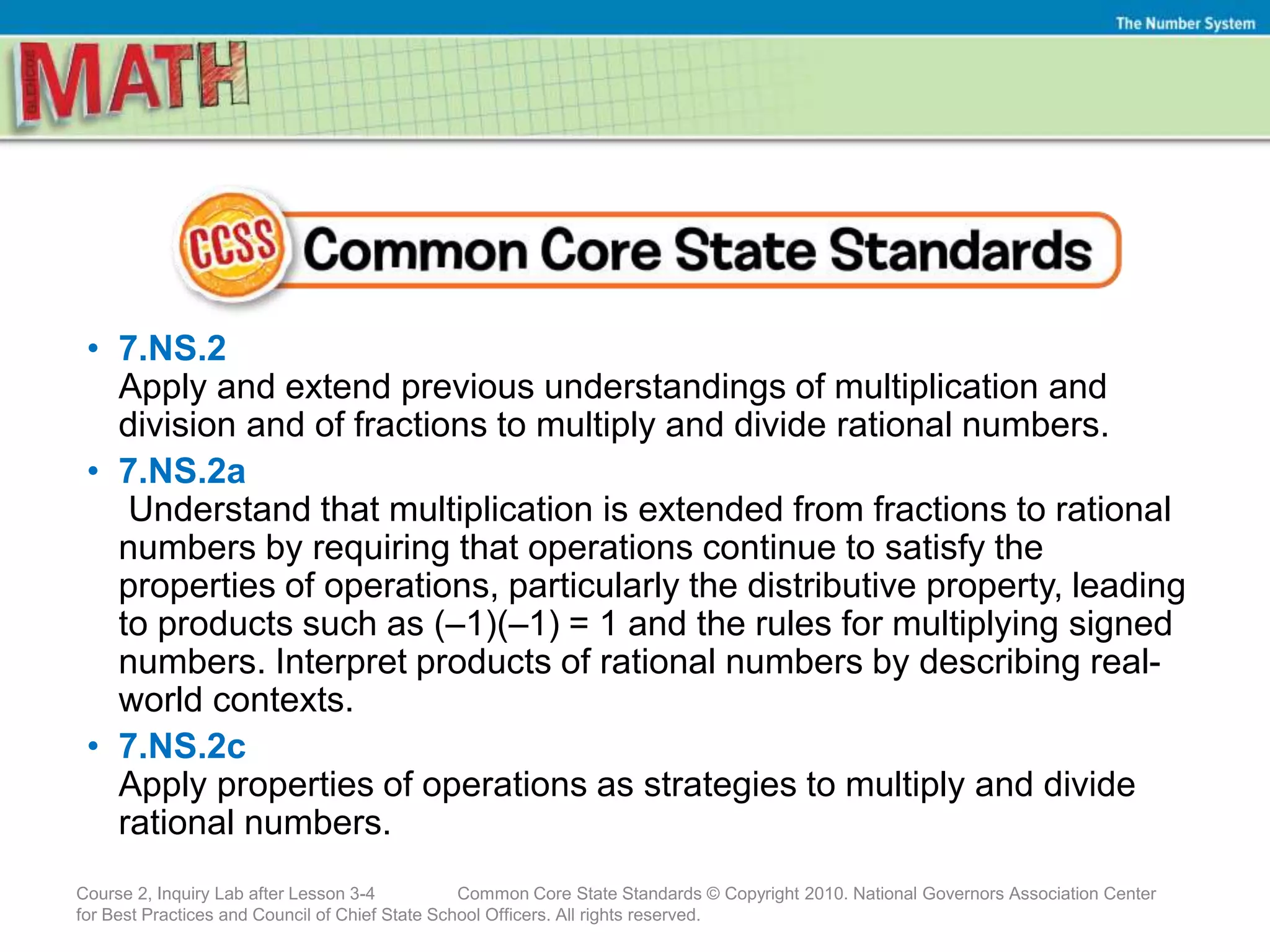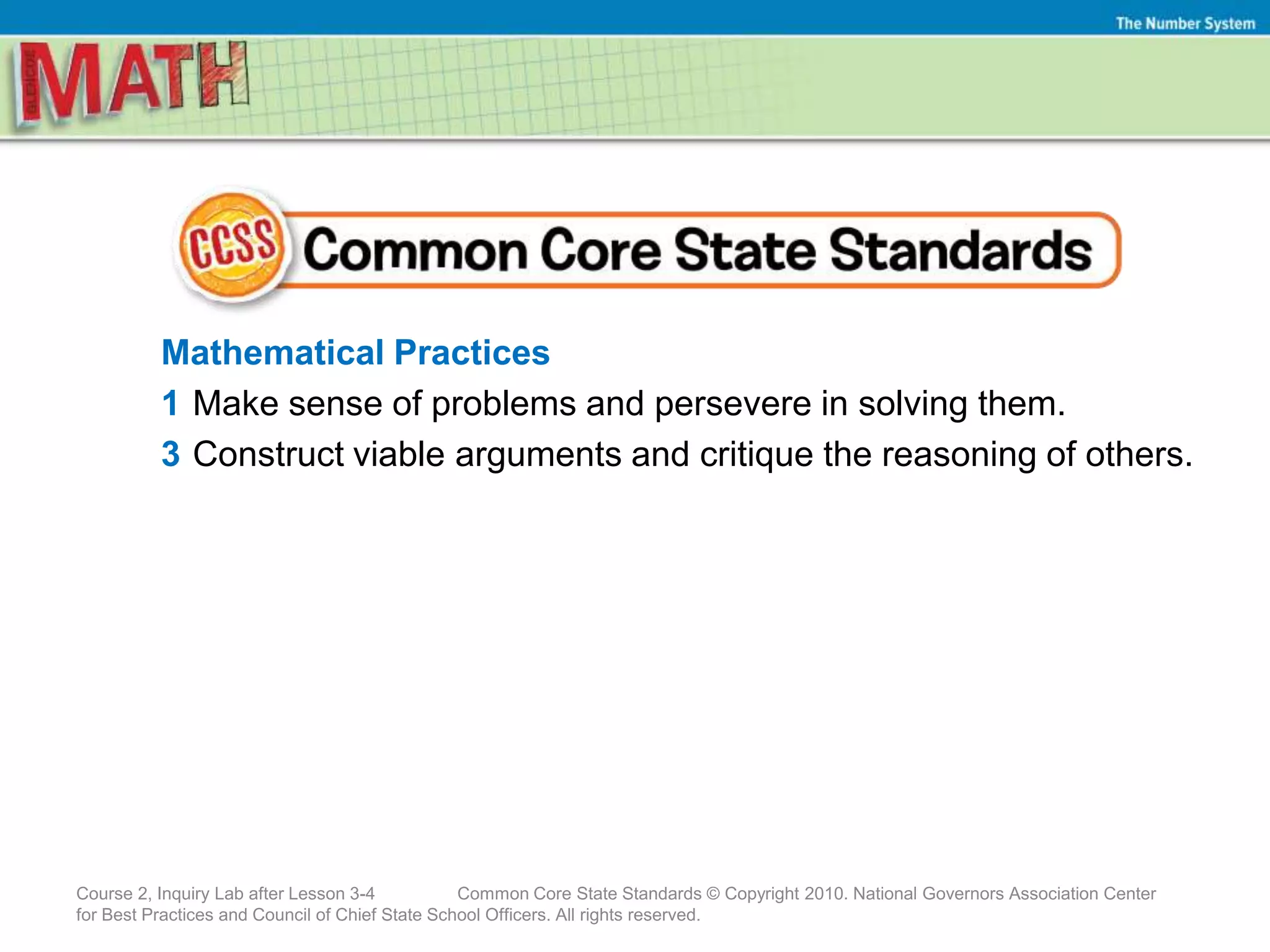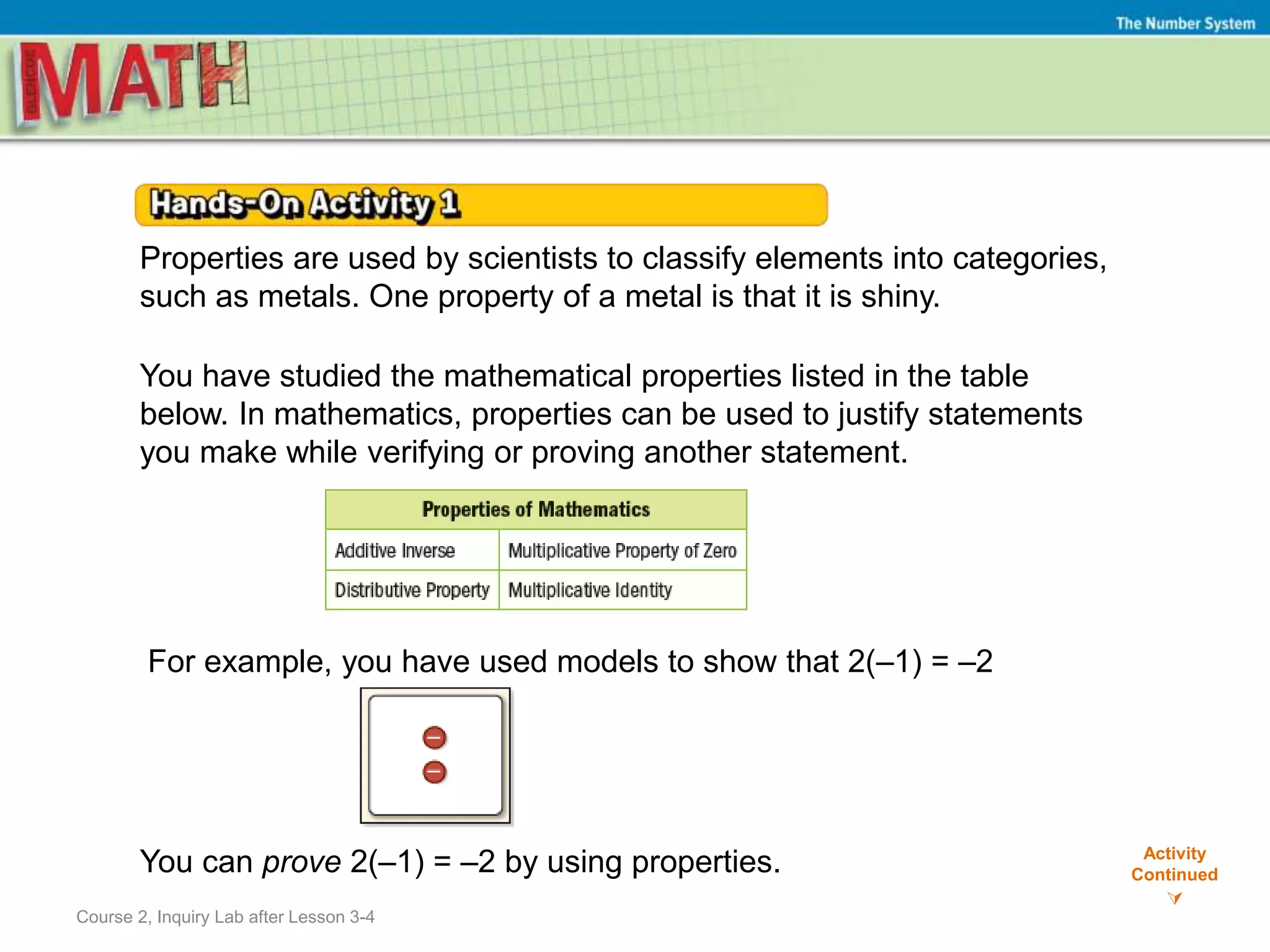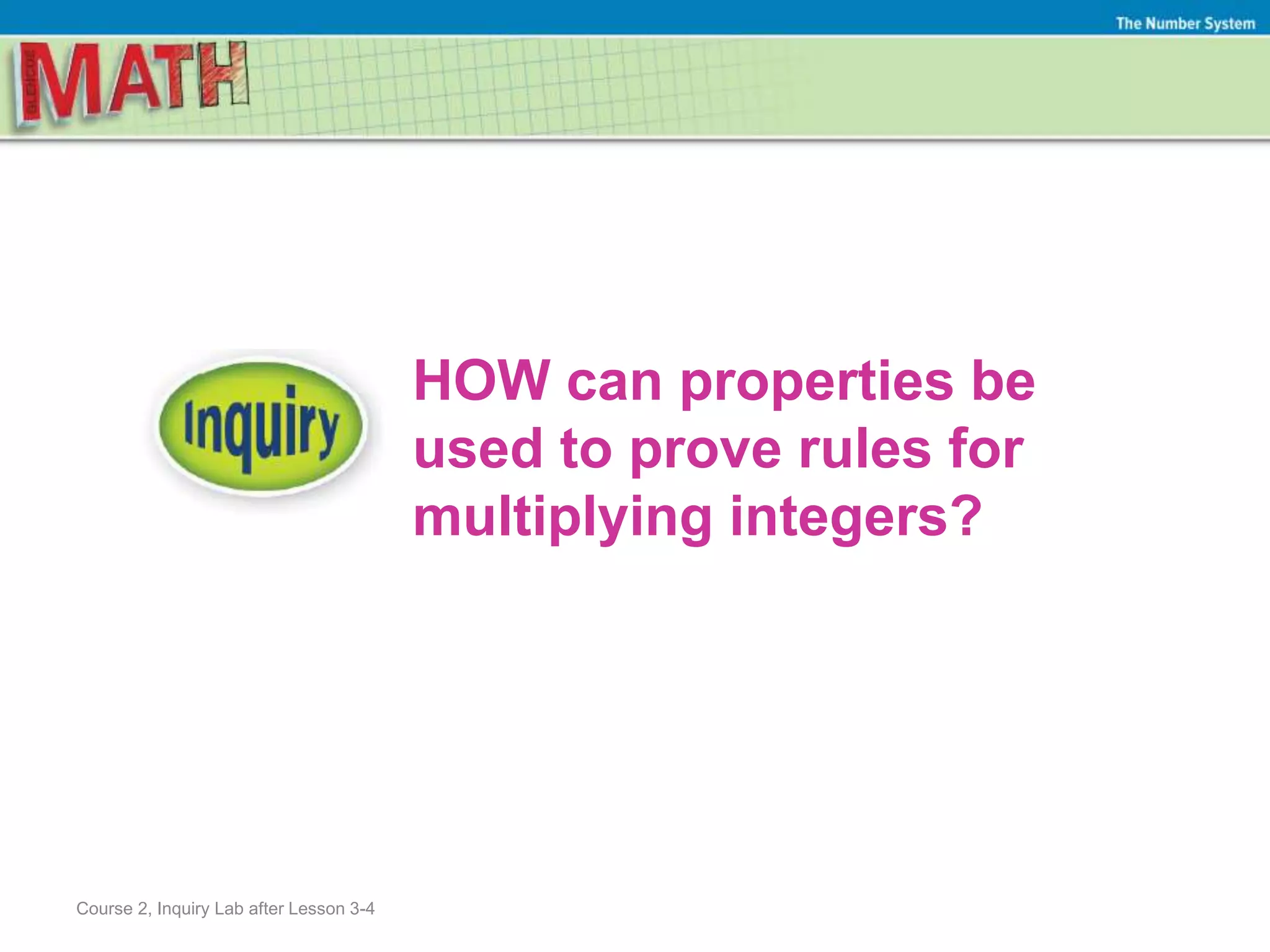Properties of numbers can be used to prove rules for multiplying integers. The distributive property allows multiplication to be extended from fractions to rational numbers, including products like (-1)(-1)=1. Properties like the distributive property can be applied as strategies to multiply and divide rational numbers. For example, using properties one can prove that 2(-1)=-2 by writing expressions like 0=2+2(-1) and applying the distributive property to show 2(-1) must equal -2.




![Course 2, Inquiry Lab after Lesson 3-4
The Number System
Properties are used by scientists to classify elements into categories,
such as metals. One property of a metal is that it is shiny.
Statements Properties
0 = 2(0) __________________________
0 = 2[1 + (–1)] __________________________
0 = 2(1) + 2(–1) __________________________
0 = 2 + 2(–1) __________________________
Write the correct property from the table above to provide the missing
justifications. Use each property name once.
Conclusion In the last statement, 0 = 2 + 2(–1). In order for this to be true,
2(–1) must equal –2. therefore, 2(–1) =](https://image.slidesharecdn.com/chapter3inquirylabpresentationcourse24-180928130033/75/7-Inquiry-Lab-Use-Properties-to-Multiply-5-2048.jpg)
